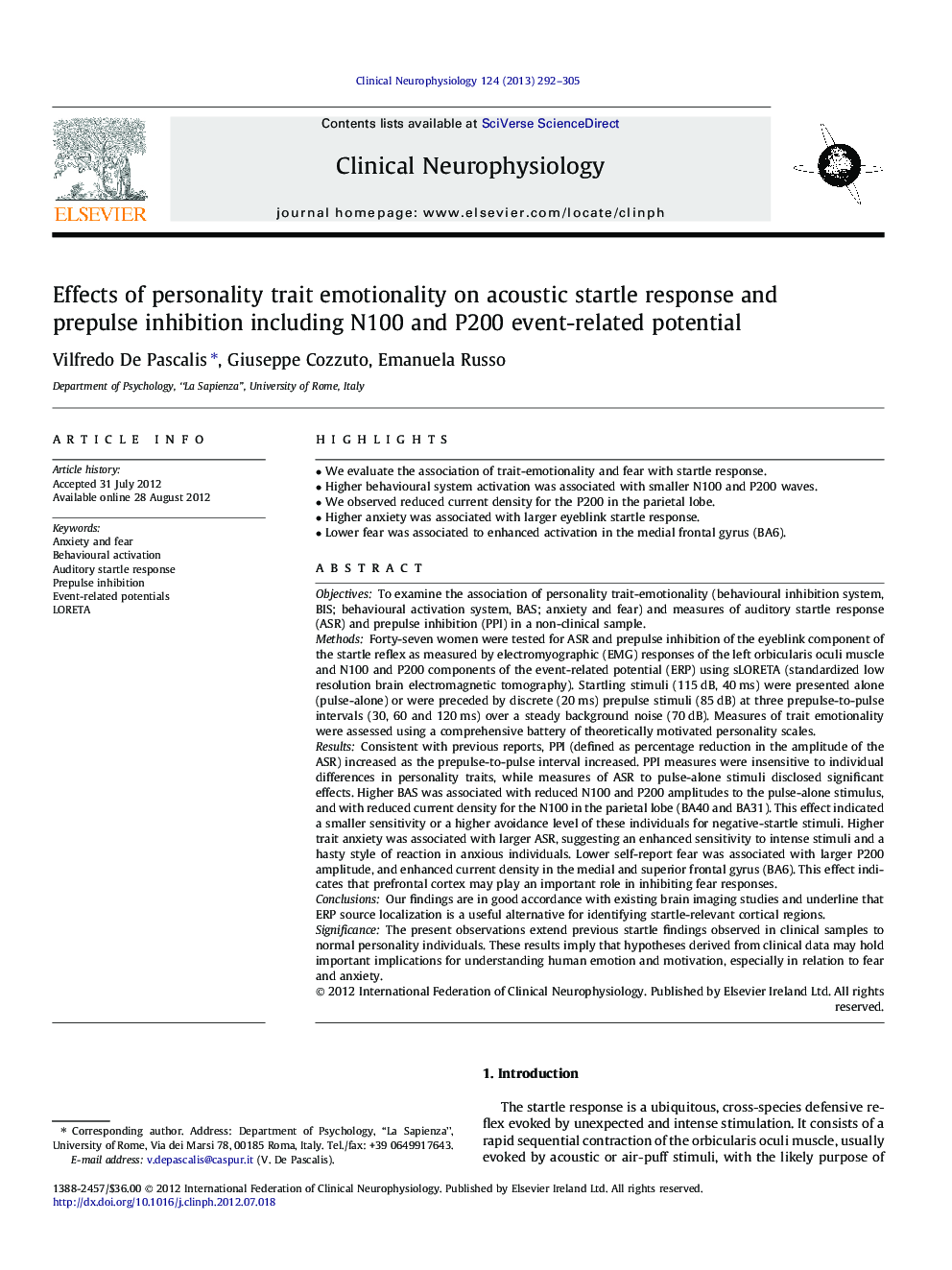| Article ID | Journal | Published Year | Pages | File Type |
|---|---|---|---|---|
| 3044610 | Clinical Neurophysiology | 2013 | 14 Pages |
ObjectivesTo examine the association of personality trait-emotionality (behavioural inhibition system, BIS; behavioural activation system, BAS; anxiety and fear) and measures of auditory startle response (ASR) and prepulse inhibition (PPI) in a non-clinical sample.MethodsForty-seven women were tested for ASR and prepulse inhibition of the eyeblink component of the startle reflex as measured by electromyographic (EMG) responses of the left orbicularis oculi muscle and N100 and P200 components of the event-related potential (ERP) using sLORETA (standardized low resolution brain electromagnetic tomography). Startling stimuli (115 dB, 40 ms) were presented alone (pulse-alone) or were preceded by discrete (20 ms) prepulse stimuli (85 dB) at three prepulse-to-pulse intervals (30, 60 and 120 ms) over a steady background noise (70 dB). Measures of trait emotionality were assessed using a comprehensive battery of theoretically motivated personality scales.ResultsConsistent with previous reports, PPI (defined as percentage reduction in the amplitude of the ASR) increased as the prepulse-to-pulse interval increased. PPI measures were insensitive to individual differences in personality traits, while measures of ASR to pulse-alone stimuli disclosed significant effects. Higher BAS was associated with reduced N100 and P200 amplitudes to the pulse-alone stimulus, and with reduced current density for the N100 in the parietal lobe (BA40 and BA31). This effect indicated a smaller sensitivity or a higher avoidance level of these individuals for negative-startle stimuli. Higher trait anxiety was associated with larger ASR, suggesting an enhanced sensitivity to intense stimuli and a hasty style of reaction in anxious individuals. Lower self-report fear was associated with larger P200 amplitude, and enhanced current density in the medial and superior frontal gyrus (BA6). This effect indicates that prefrontal cortex may play an important role in inhibiting fear responses.ConclusionsOur findings are in good accordance with existing brain imaging studies and underline that ERP source localization is a useful alternative for identifying startle-relevant cortical regions.SignificanceThe present observations extend previous startle findings observed in clinical samples to normal personality individuals. These results imply that hypotheses derived from clinical data may hold important implications for understanding human emotion and motivation, especially in relation to fear and anxiety.
► We evaluate the association of trait-emotionality and fear with startle response. ► Higher behavioural system activation was associated with smaller N100 and P200 waves. ► We observed reduced current density for the P200 in the parietal lobe. ► Higher anxiety was associated with larger eyeblink startle response. ► Lower fear was associated to enhanced activation in the medial frontal gyrus (BA6).
